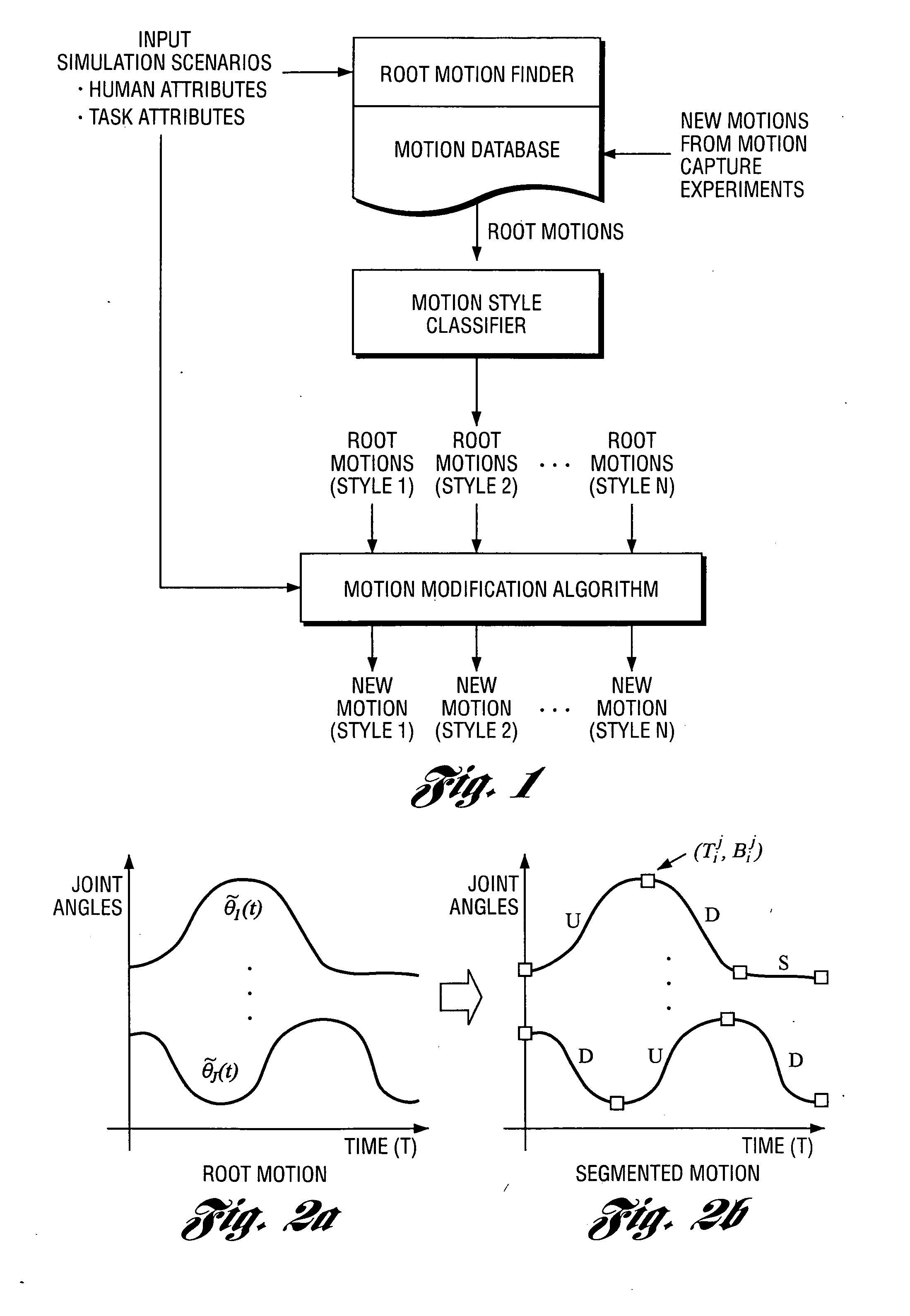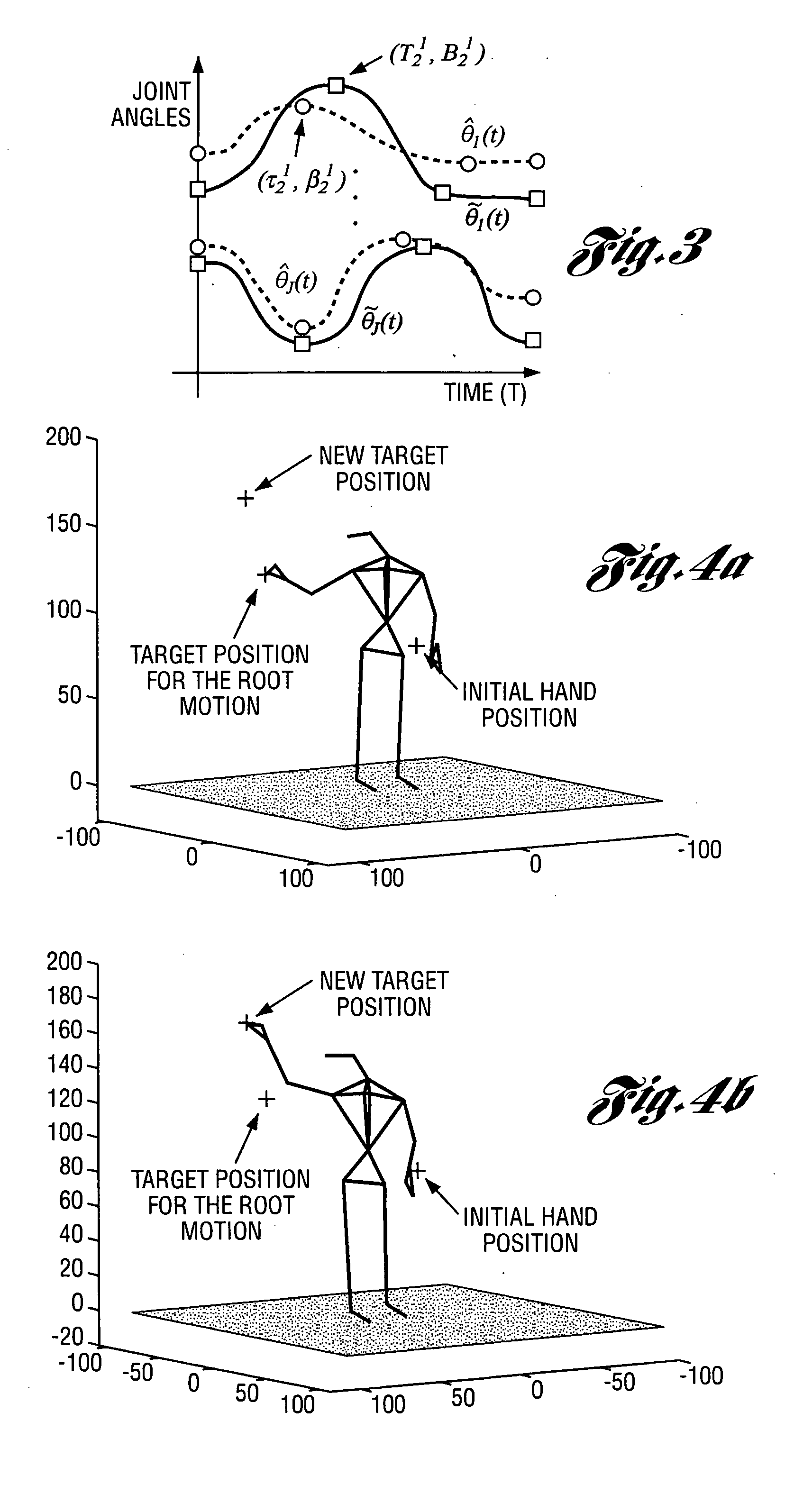Method, system and computer program product for predicting an output motion from a database of motion data
a technology of motion data and output motion, applied in the field of methods, systems and computer program products for predicting output motion from a database of motion data, can solve problems such as limited previous models
- Summary
- Abstract
- Description
- Claims
- Application Information
AI Technical Summary
Problems solved by technology
Method used
Image
Examples
Embodiment Construction
The generalized motor program (GMP) theory [30] states that movement patterns, called motor programs, are stored in human memory and are utilized as templates for motion planning. Parameters such as movement duration and amplitude can be modified to adjust a selected motor program as a function of the task to perform. The GMP theory seems to provide the plasticity necessary to address the issues stated above, namely, generality, accommodation of movement alternatives, and repertoire expansion, as the human memory can be thought of as capable of storing motor programs of various motion types and styles, as well as continually updating them. The theory therefore seems to provide a desirable model structure for developing useful ergonomic human motion simulation models.
Recent studies in the computer graphics field also support the feasibility of GMP-based human motion prediction models. Motion editing / adaptation / retargeting methods, developed for computer game animation and digital ...
PUM
 Login to View More
Login to View More Abstract
Description
Claims
Application Information
 Login to View More
Login to View More - R&D
- Intellectual Property
- Life Sciences
- Materials
- Tech Scout
- Unparalleled Data Quality
- Higher Quality Content
- 60% Fewer Hallucinations
Browse by: Latest US Patents, China's latest patents, Technical Efficacy Thesaurus, Application Domain, Technology Topic, Popular Technical Reports.
© 2025 PatSnap. All rights reserved.Legal|Privacy policy|Modern Slavery Act Transparency Statement|Sitemap|About US| Contact US: help@patsnap.com



